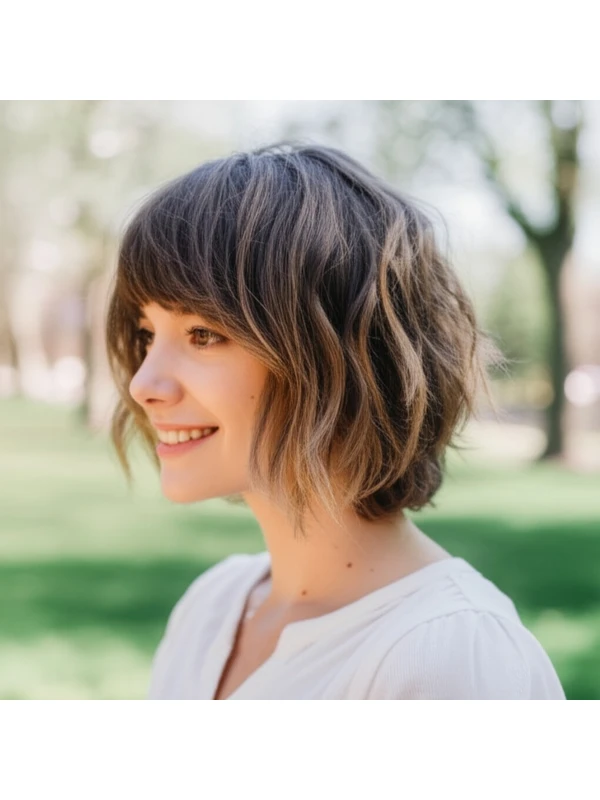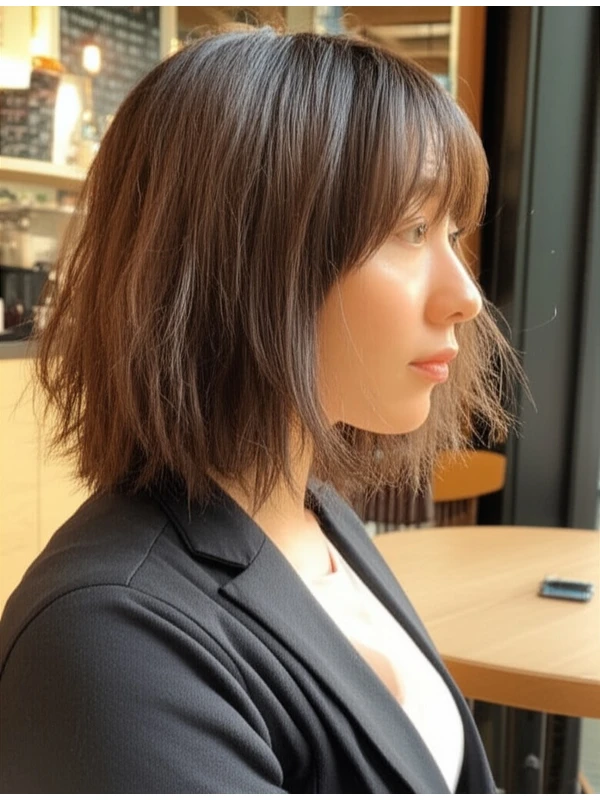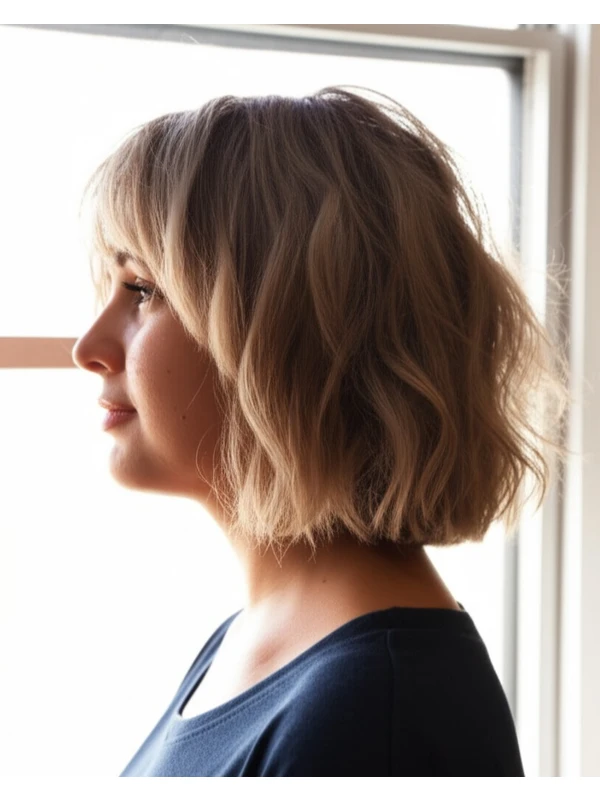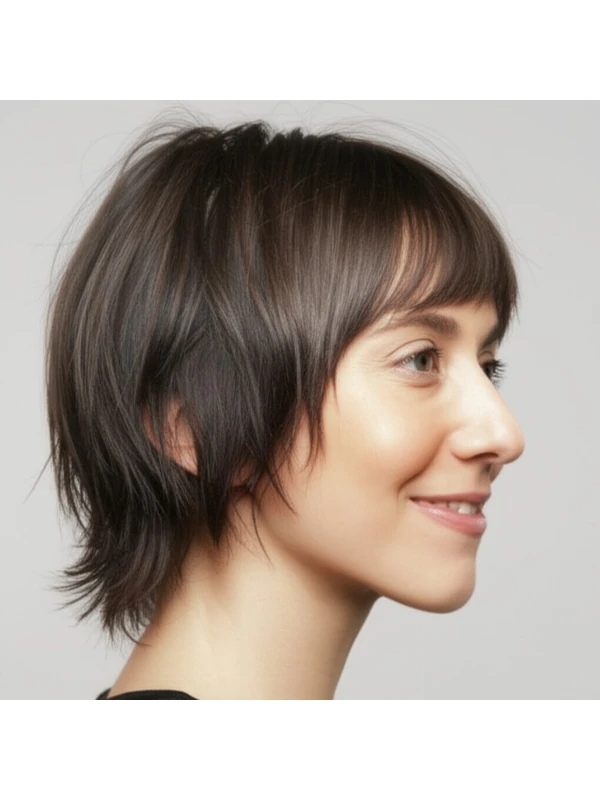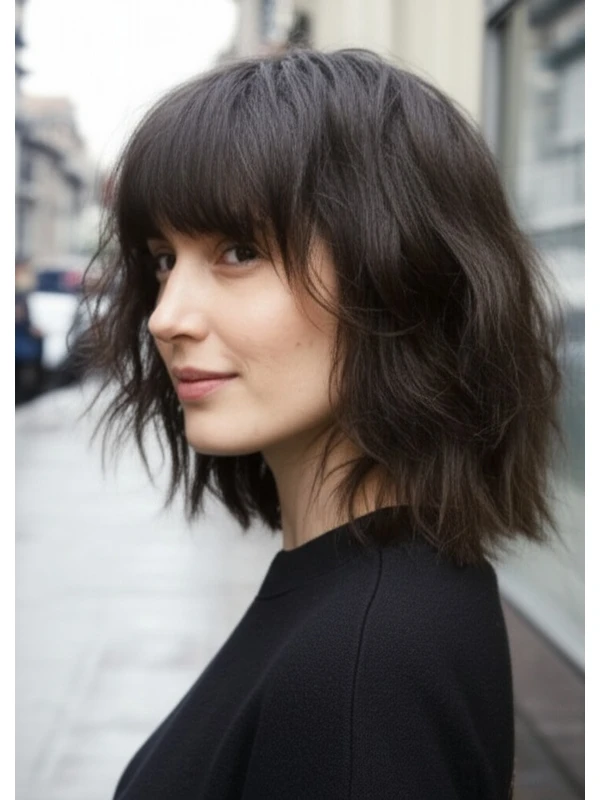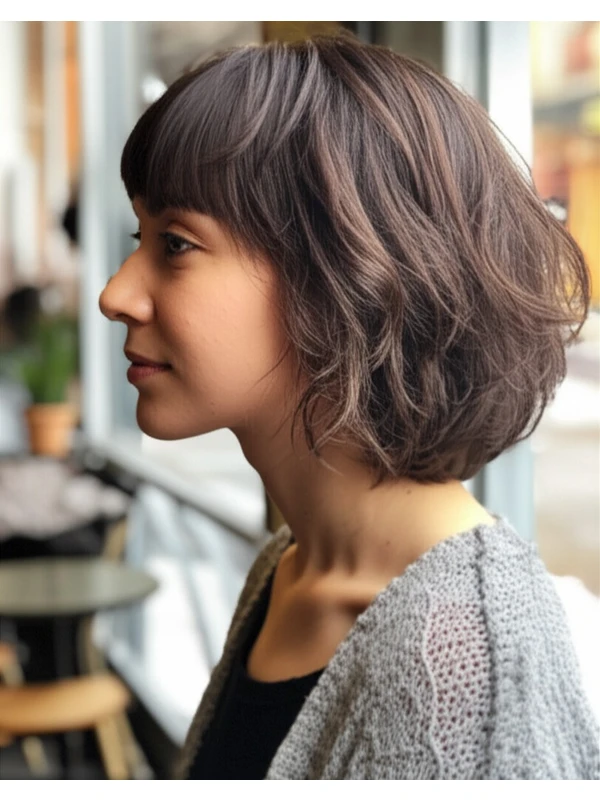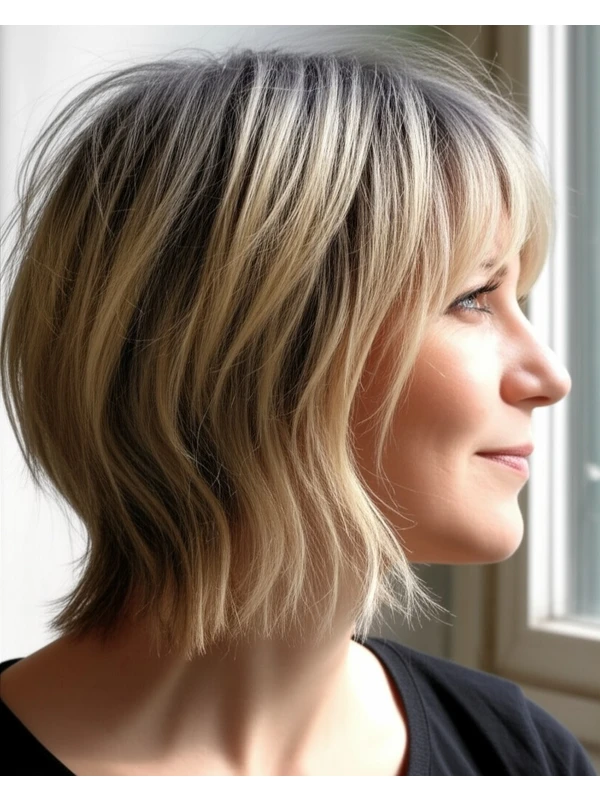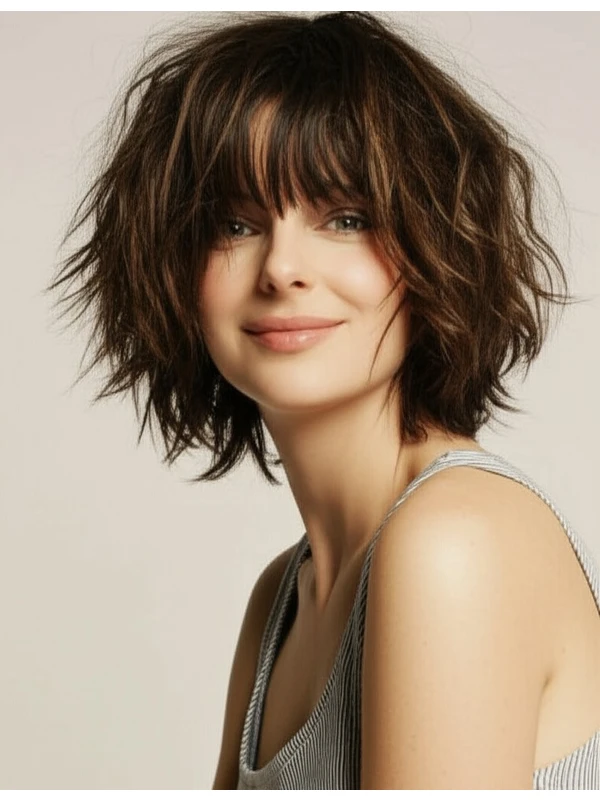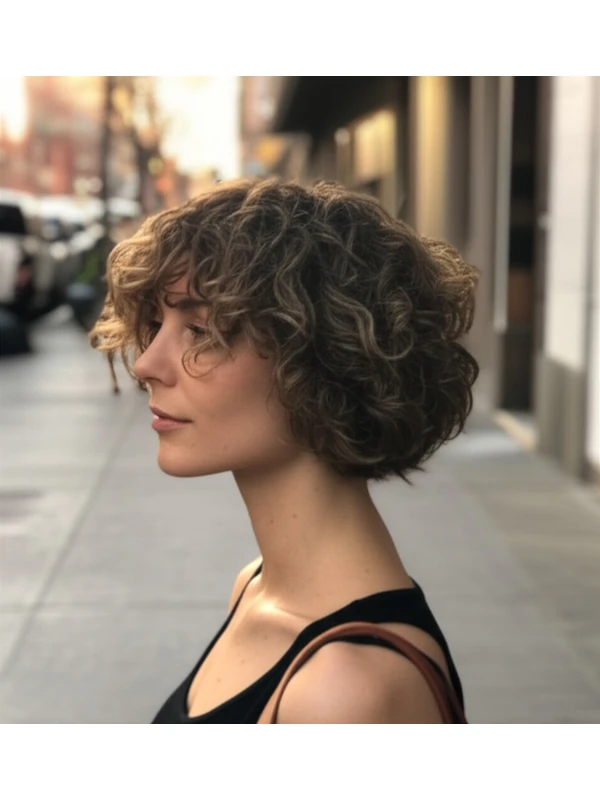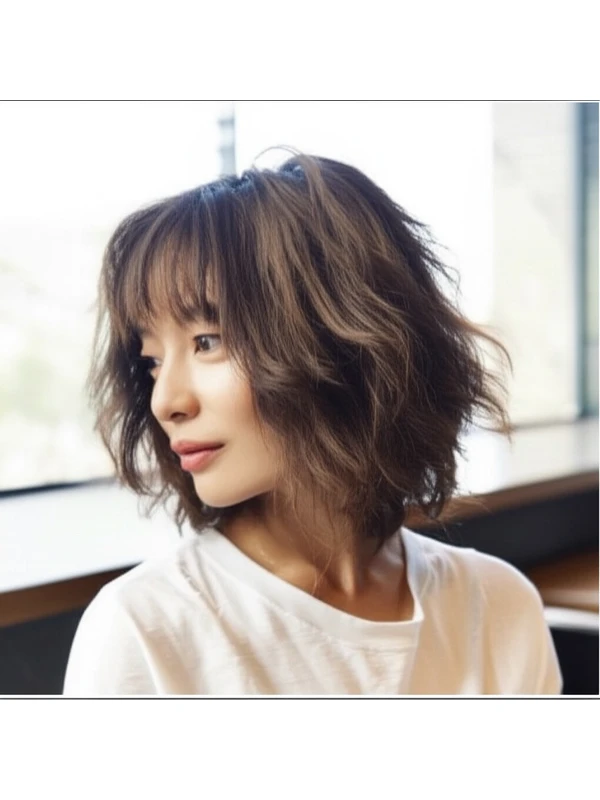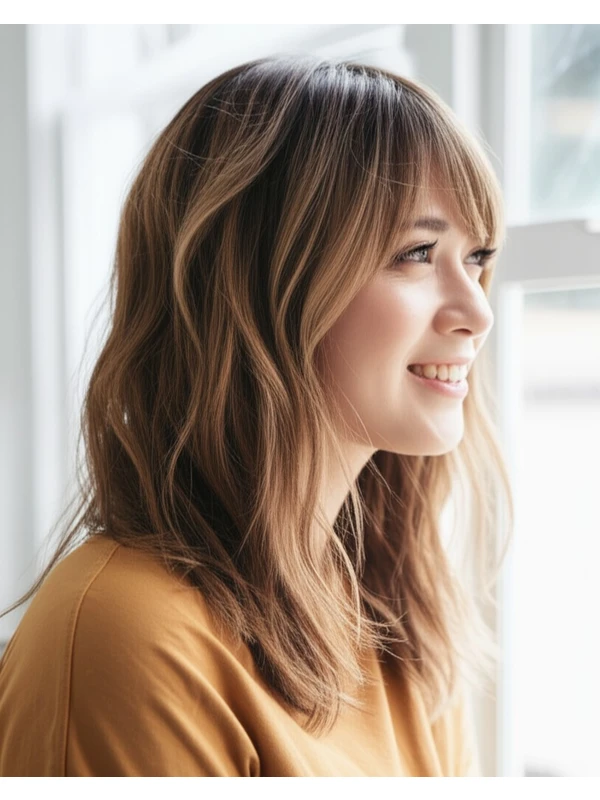#The Shag: A Guide to Effortless Cool
The shag haircut is back – and it’s more adaptable than ever! This iconic style has evolved from its 70s roots into a modern, personalized look that celebrates texture and individuality. But what is a shag? Let's break down everything you need to know.
#1) Background & Definition: What is a Shag?
The shag isn’t just one thing; it's more of a philosophy than a rigid haircut. At its core, the shag prioritizes layers – lots and lots of them! Think choppy ends, face-framing pieces, and an overall feeling of undone texture.
Key Features:
- Heavy Layering: This is the defining characteristic. Layers are cut at various lengths to create movement and volume.
- Face Framing: Pieces around the face are typically shorter than the rest of the hair, drawing attention to your features.
- Disconnected Undercut (Optional): Some modern shags incorporate a more dramatic undercut for added edge.
- Texture-Focused: The shag is designed to work with your natural texture, not against it.
Typical Length Ranges: Shags can range from chin-length "micro shags" to long, flowing styles that graze the shoulders or even extend past.
Alternative Names: You might hear this style referred to as a “modern shag,” “textured shag,” or simply a "layered cut."
#2) Face Shape Fit: Finding Your Shag Sweet Spot
The beauty of the shag is its adaptability, but understanding how it interacts with your face shape will help you achieve the most flattering result.
- Oval: Lucky you! The shag generally looks fantastic on oval faces as it complements their balanced proportions. A full fringe or curtain bangs work beautifully.
- Round: Shags can slim a round face by adding height and length. Opt for longer layers that start below your chin, avoiding too much volume at the cheeks. Side-swept fringe softens the fullness.
- Square: The shag’s soft layers soften angular features. A brow-grazing fringe or curtain bangs will help to break up a strong jawline. Avoid blunt lines and harsh angles.
- Heart: Shags work well for heart-shaped faces, balancing a wider forehead with shorter face-framing pieces. Longer layers that fall below the chin create balance. A side part is often more flattering than a center part.
- Diamond: A shag can soften diamond shapes by adding volume around the cheekbones and jawline. Curtain bangs or a wispy fringe are great choices to add softness.
- Oblong (Long): Shags with shorter layers and face-framing pieces help create width, making an oblong face appear more balanced. Avoid overly long lengths that can elongate the face further.
#3) Body Proportions & Height Guidance: Tailoring the Silhouette
Beyond your face shape, consider your overall body proportions when choosing a shag length and volume placement.
- Petite: Shorter shags (chin to shoulder-length) with strategically placed layers add visual height without overwhelming a smaller frame. Avoid overly voluminous styles that can appear disproportionate.
- Average Height: Most shag lengths work well for average heights. Experiment with different layer placements and fringe options to find what suits your style best.
- Tall: Longer shags (shoulder-length or longer) create balance for taller individuals. Consider adding volume at the crown to prevent a flat, elongated appearance.
- Narrow Shoulders: Layers that add width around the shoulders can help fill them out. Consider face-framing layers that connect with shoulder length pieces.
- Broad Shoulders: Avoid excessive volume on top, which can accentuate broad shoulders. Opt for more subtle layering and a side part to create asymmetry.
- Long Neck: Shorter shags or styles with shorter layers around the face can help balance a longer neck.
#4) Works Best With Hair Types & Densities: Texture is Key!
The shag truly shines when working with your natural hair texture and density.
- Straight Hair: A shag adds much-needed movement and volume to straight hair. Layers will create separation and prevent a flat, lifeless look.
- Wavy Hair: The shag enhances natural waves, creating effortless beachy vibes. Embrace the texture!
- Curly Hair: Shags are fantastic for curly hair, defining curls and reducing bulk. Layering helps distribute weight evenly and prevents triangular shapes. Shrinkage Note: Curly and coily hair will appear shorter than straight hair due to shrinkage. Account for this when determining length.
- Coily Hair: A shag can bring out the beautiful definition in coils, while removing excess density.
- Fine Hair: Shags create the illusion of volume by adding layers and movement. Avoid overly heavy layering which can make fine hair look even thinner.
- Medium Hair: The shag is universally flattering for medium-density hair – embrace the texture!
- Thick Hair: Shags are a great way to remove weight from thick hair, creating lightness and bounce.
#5) Styling Variations: From Casual Cool to Evening Chic
The beauty of the shag lies in its versatility. Here's how to adapt it for different looks:
- Sleek vs. Textured: For a sleeker look, use smoothing serums and minimal heat styling. For texture, embrace air-drying or diffuse your hair.
- Middle vs. Side Part: A center part creates symmetry; a side part adds softness and asymmetry.
- Fringe Variations: Full bangs, curtain bangs (longer pieces that frame the face), wispy fringe – all work beautifully with a shag!
- Occasion Styling:
- Casual: Air-dry with sea salt spray for effortless texture.
- Office: Smooth out frizz and add shine with a serum. A side part looks polished.
- Evening: Add waves or curls using a curling iron or hot rollers, and finish with hairspray.
#6) Maintenance: Keeping Your Shag Sharp
Regular trims are essential to maintain the shag's shape and prevent it from looking overgrown.
- Trim Cadence: Every 6-8 weeks is standard.
- At-Home Routine: Focus on enhancing your natural texture – air drying, diffusing, or using texturizing products.
- Heat vs. Air Dry: Minimize heat styling to preserve hair health and maintain the shag's effortless vibe. When you do use heat, always apply a protectant spray.
- Product Checklist:
- Shampoo & Conditioner (suited for your hair type)
- Leave-in Conditioner (especially important for dry or curly/coily hair)
- Texturizing Spray or Sea Salt Spray
- Lightweight Styling Cream or Balm
- Hairspray (flexible hold)
- Estimated Daily Styling Time: 5-15 minutes, depending on your desired level of styling.
#7) Grow-Out Roadmap: Evolving Your Look
The shag evolves beautifully as it grows out.
- Months 1-3: The initial shape is most defined; regular trims maintain the layers.
- Months 3-6: Layers start to blend, creating a softer look. Consider adding face-framing pieces or adjusting the fringe.
- Maintaining Shape: Between cuts, focus on enhancing your natural texture and avoiding styles that pull the hair too tight.
#8) Color Pairings: Enhancing Your Shag’s Dimension
Color can elevate a shag's inherent movement and dimension.
- Cool Undertones (pink, blue): Icy blondes, ash browns, or even subtle violet tones look stunning with cool undertones.
- Warm Undertones (yellow, gold): Honey blondes, copper reds, or golden browns complement warm skin tones beautifully.
- Low-Commitment Options: Balayage or babylights add dimension without a drastic color change. Root smudging can soften the grow-out process.
#9) Season & Occasion Guide: Styling for Every Moment
- Spring/Summer: Embrace air-dried texture and lighter products.
- Fall/Winter: Add warmth with richer tones and use hydrating styling products to combat dryness.
- Work: A sleek, side-parted shag exudes professionalism.
- Weddings: Soft waves or curls add romance and elegance.
- Parties: Experiment with bolder color accents or more dramatic styling techniques.
#10) Cost & Time: Investment in Effortless Style
- Salon Time: Typically 60-90 minutes, but can vary depending on complexity and stylist expertise.
- Estimated Price Range: Generally falls within the mid-range of salon services—expect to pay a bit more than for a simple trim, but less than for a complex balayage.
#11) Pros & Cons: Weighing Your Options
Pros: Versatile, flattering on many face shapes and hair types, easy to style (can be low-maintenance), celebrates natural texture. Cons: Requires regular trims, can look messy if not styled properly, may require more product than simpler styles.
#12) Salon Consultation Script: Questions to Ask Your Stylist
Here are some prompts you can use during your consultation:
- “I’m interested in a shag haircut. Can you show me examples of shags that would suit my face shape and hair type?”
- "How much layering will I need to achieve the desired look?"
- "What fringe options would work best with my features?"
- "Can we discuss how this style will evolve as it grows out?"
- “I'm looking for a low-maintenance style. Can you suggest products and styling techniques that won’t take up too much time?”
#FAQs: Your Shag Style Questions Answered
- Is the shag right for me if I have very fine hair? Absolutely! But be sure to communicate this with your stylist, who can tailor the layering to avoid thinning.
- Can a shag work on short hair? Yes! A "micro-shag" is a trendy option for shorter lengths.
- How do I prevent my shag from looking too messy? Focus on enhancing texture rather than trying to tame it completely. Use texturizing products and avoid over-smoothing.
- What if I don’t want bangs with my shag? No problem! A shag can be just as stylish without a fringe.
- Will this style damage my hair? The cut itself won't damage your hair, but excessive heat styling after the cut could lead to dryness or breakage.
- How long does it take for a shag to grow out if I don’t like it? It will take several months for layers to blend and the shape to soften significantly. Regular trims can help guide the grow-out process.
